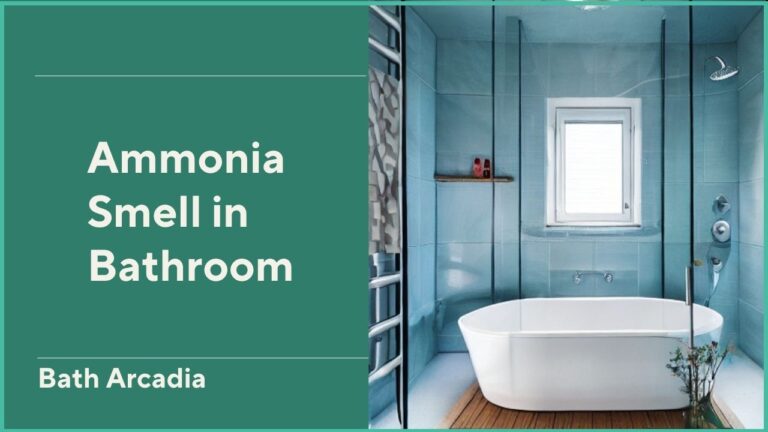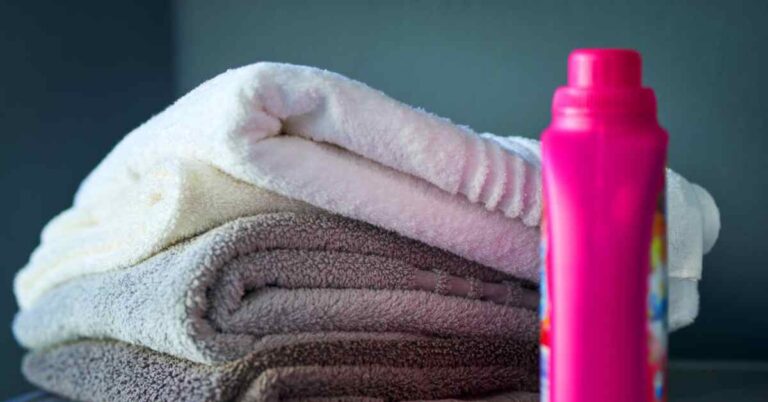- Ensuring Your Water Heater is Performing at its Peak Inside and Out
- Safely Maintaining Your Gas or Electric Water Heater
- Optimizing Water Heater Placement in Your Bathroom
- Tips for Maximizing Hot Water Availability in the Bathroom
- Dealing with Common Water Heater Problems in the Bathroom
- Strategically Upgrading Components for Better Performance
- Protecting Your Investment from Freezing Damage
- Conclusion
Ensuring Your Water Heater is Performing at its Peak Inside and Out
A reliable water heater is essential for warm showers and baths whenever you need them. However, many homeowners neglect basic water heater maintenance, leading to inefficient performance and higher utility bills. This article discusses the essential checks you should do regularly to keep your water heater operating smoothly and prolong its lifespan.
Inspecting the Exterior Tank and Connections
The outer metal tank of your water heater takes a beating from temperature fluctuations and corrosion. Check it periodically for rust spots or dents that could cause leaks down the road. Ensure all pipes connecting to the tank are secure and insulated properly to minimize heat loss.
Look for stains or wet spots around the connections that may signal a leak forming. Taking preventative measures like this ensures your morning shower stays hot for years.
Checking the Anode Rod and Flushing Sediment
Sediment buildup inside the tank and corrosion of the anode rod are two big culprits that can sabotage the water heater function. The anode rod protects the tank from corrosion, but it erodes over time doing its job.
After about 5-10 years, it may need replacing. You can also flush sediment from the bottom of the tank through a drain valve. Flushing removes mineral buildup that taxes the heating elements. Both tasks help maximize efficiency.
Keeping the Flue Clean and Unobstructed
On gas water heaters, the flue pipe transports exhaust fumes outside. Check that the flue opening and pipe are clear of obstructions like nests or debris. A blocked flue can lead to carbon monoxide leaks into your home. Ensure the vent termination outside is not blocked by snow or overgrown plants. Like keeping chimneys clean, this simple seasonal chore prevents dangerous backdrafts.
Calibrating the Temperature Settings Properly
Most water heaters have a dial or digital controls to set the water temperature. For safety and efficiency, the temperature should be no higher than 120°F.
Any cooler is fine for most uses but doesn’t waste energy heating water past what’s needed. You can also adjust the “vacation” setting lower when away to reduce standby losses significantly. Dialing in the right temps saves on utility bills year-round.
Safely Maintaining Your Gas or Electric Water Heater
The type of fuel powering your water heater, either natural gas or electricity, determines some maintenance priorities. But basic safety practices apply to both. Here are some gas- and electric-specific checks to keep your bathroom’s hot water supply hazard-free:
Ensuring Gas Line and Pilot Light Safety
If you have a gas water heater, inspect the flexible gas line connections for cracks, corrosion, or leaks yearly. Check that the pilot light ignites securely every time and doesn’t go out alone. Any issues, and you risk carbon monoxide or gas leaks in your home. It’s worth hiring an experienced professional to service gas appliances annually.
Checking Circuit Breakers and Ground Fault Modules
Electric water heaters must verify that circuit breakers are not tripped, and that ground fault circuit interrupter (GFCI) modules are working as intended. These safety devices prevent shocks if the elements are short. Test GFCIs monthly by pressing the test button – if they don’t trip the main breaker, replace them. Also, inspect power cords and junction boxes for signs of damage.
Flushing Out Sediment Deposits
Whether gas or electric, sediment buildup inside the tank reduces efficiency over time for both. Draining and flushing the tank every few years helps remove mineral deposits from the bottom that accumulate from your water supply. This improves heat transfer and combustion, saving energy costs in the long run. It’s a simple task that prolongs your heater’s service life.
Optimizing Water Heater Placement in Your Bathroom
Beyond routine care and safety checks, the placement of your water heater can greatly impact performance and your home’s layout. Here are some tips for locating water heaters strategically:
Centralizing the Heater near Points of Use
Positioning the water heater in a central location close to areas with high hot water demand, like showers, laundry, or kitchens, is most efficient. Shorter pipe runs mean less heat loss in transferring water throughout the home. A utility room, basement, or garage near major water lines works well. Avoid attics where extreme heat makes units less effective.
Allowing Proper Ventilation and Combustion of Air
Both gas and electric heaters need sufficient airflow to work properly and vent exhaust or fumes outside safely. Install per manufacturer clearances from insulation, drywall, and combustible materials. Gas models specifically require an air intake vent and exterior vent termination. Poor ventilation stresses appliances and raises utility bills.
Making future Access and Maintenance Convenient
Consider access panels, doors, drain valves, and electrical lines when locating water heaters. You’ll save yourself future hassle and expense by positioning units in areas allowing easy inspection, repairs if needed, and regular flushing. Bathroom placement is possible with the right configuration.
Tips for Maximizing Hot Water Availability in the Bathroom
There’s nothing worse than running out of hot water mid-shower. Implement some of these tricks to boost the capacity around your bathroom:
Right-Sizing the Water Heater Tank
Oversizing or under-sizing the tank leads to inefficiency. Choose the correct gallon capacity matched to your household usage. Too large and energy goes to heating unused water. Too small results in running out quickly. Get guidance on sizing from a pro based on the number of showers daily.
Insulating Hot Water Pipes
Wrapping exposed hot water supply lines in your home with insulation prevents heat loss as water travels to fixtures. This ensures more hot water delivery from every heated gallon in the tank. Look for pre-slit foam pipe insulation at hardware stores.
Using Low-Flow Showerheads
While still providing a satisfying shower, low-flow showerheads use 1.5 gallons or less per minute compared to older 2.5 GPM models. Over a 10-minute shower, that’s over a gallon conserved right there! Upgrade shower fixtures for big savings on water and water heating costs over time.
Installing a Hybrid or Tankless Water Heater
A tankless or hybrid system provides endless hot water by heating on demand for households with especially high demand. No more running out mid-shower. You pay more upfront but potentially lower utility bills depending on usage. Do the math to see if it will pay off in your situation.
Dealing with Common Water Heater Problems in the Bathroom
No system runs flawlessly forever. Here are some common water heater issues homeowners in bathrooms sometimes encounter and what to do:
Rumbling Noises or Vibrations
Minor noises could be sediment buildup or a loose part. Loud rumbling likely signals a failed element, pilot assembly, or less severe problems left unchecked. Schedule service to address mechanical problems and maintain peace.
A Smelly Hot Water Supply
Sulfur or rotten egg odors indicate hydrogen sulfide in your water reacting with the hot water tank. It’s harmless but stinky. Have the tank drained, flushed, and inspected by a pro to remedy it.
Decreased Hot Water Temperature
Low hot water could be due to worn heating elements, fouled heat exchangers, lime buildup, or incorrectly set temperature control. Flush and service the unit or replace elements to restore hot shower comfort.
Sudden Major Leaks Around Tanks or Pipes
Deferred maintenance exposes cracking issues or hidden corrosion. Isolate water, drain the tank, and make repairs immediately before water damage occurs. Consider relocation or new tank installation if extensive rust is present.
Taking an extra few minutes monthly and annually to check on your water heater prevents costly or disruptive bathroom problems down the road. Staying ahead of common issues ensures years of reliable hot water for all your bathing needs. With regular care and location optimization, one heater can serve a household through many home renovations.
Strategically Upgrading Components for Better Performance
While general maintenance keeps your water heater running smoothly, certain upgrades can boost efficiency, capacity, and comfort. Here are some worthwhile investments to consider:
Insulating Jackets and Blankets
If your water heater is aging, but the tank is still sound, an insulating jacket reduces standby heat loss through the metal shell by 25-45%. Look for rigid fiberglass jackets that slip right over the exterior. Gas models also insulate exposed pipes. Staying warmer between uses means less energy spent reheating.
High-Efficiency Tank Replacements
A new heat pump or condensing tank-style achieves over 90% fuel efficiency. While costing more upfront, rebates may be available. Efficiency California estimates these tanks cut utility bills by over 50% annually. Check eligibility for your area. The savings ultimately pay for the new purchase price.
Energy-Saving or “Smart” Thermostats
Programmable or WiFi-enabled thermostats learn your household’s hot water usage patterns to heat water only as needed precisely. Some can be controlled remotely via smartphone too. Average savings of $100 per year make these inexpensive upgrades quickly worthwhile.
Water Softening or Filtration Systems
If you have hard water staining fixtures and clothes, installing whole-house water softening prevents those minerals from depositing in your tank. Proper filtration traps other sediment to prolong component life significantly. Both improve efficiency over the long haul.
Expansion Tanks
In areas with high mineral content water, an expansion tank absorbs pressure surges as the tank heats and cools, preventing damage to temperature and pressure relief valves or leaks over time. They essentially future-proof the appliance from water quality issues.
Solar Water Heating Panels
For some homeowners, adding collectors to pre-heat water using sunshine has payback periods under 10 years, depending on credits. Though a major investment, you produce free hot water from then on. Solar can be highly worthwhile, especially in sunny climates with high utility rates.
Making improvements thoughtfully based on your budget, location, and needs ensures peak performance for many happy years of hot showers. Combining regular maintenance and selective upgrades maximizes the value of any water heater system. Talk to licensed plumbers about customizing care options for your home and family demands.
Protecting Your Investment from Freezing Damage
In cold climates or if summering elsewhere, protect outdoor water heaters or exposed plumbing from freezing with these precautions:
- Drain pipes and exterior water heaters completely if vacant temporarily in frigid weather. Lag indoor units with insulation as well if susceptible areas.
- Wrap pipes in heated areas like basements or garages with self-sealing wrap. Foam sleeves sealed with weather stripping provide extra freeze protection indoors.
- For outdoor units, install appliance blankets made for below-freezing exposure. Some even have thermostatic controls for efficient snow melting.
- Disconnect and drain garden hoses from exterior spigots each fall before the first frost. A small cutoff avoids bursts.
- Keep the thermostat set slightly higher when away for longer periods, as freezing domestic water wreaks expensive havoc on metal tanks and pipes alike.
Catching vulnerability to freezing early allows proactive preparations to sidestep costly repairs. An ounce of prevention protects your investment through changing seasons.
Conclusion
Maintaining and upgrading your home’s water heater as needed ensures reliable hot water availability from the bathroom for all your household’s hygiene and cleaning needs. Small, regular tasks prevent expensive downtime from failure and optimize performance. Thoughtfully placing the unit for centralized use and proper ventilation also boosts efficiency.
While hot showers are often taken for granted, the well-cared-for water heater remains a workhorse appliance providing comfort and health benefits year-round. By staying on top of manufacturer maintenance guidelines tailored to your specific model, your investment will serve decades of hot water enjoyment.
Whether troubleshooting problems or researching worthwhile improvements, consulting licensed plumbers leads to maximized value and safety from this unseen but essential home system.


